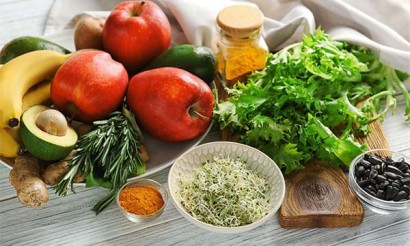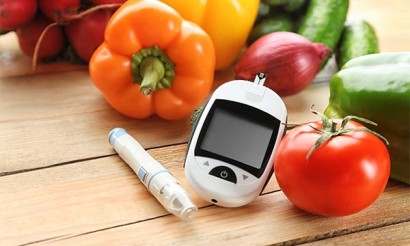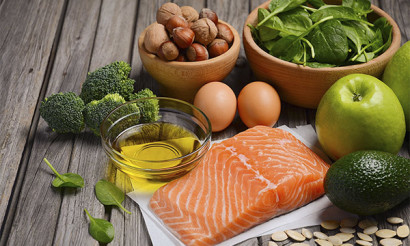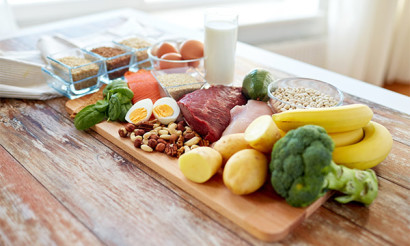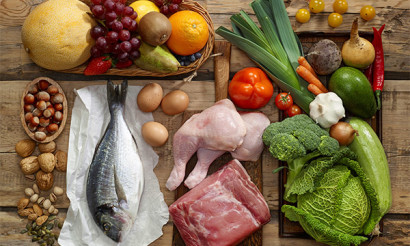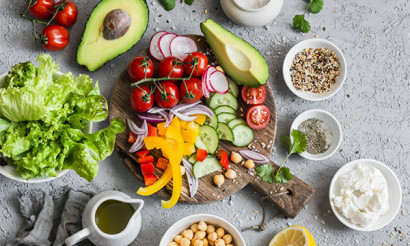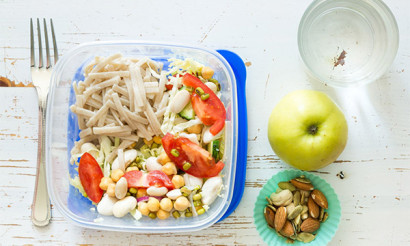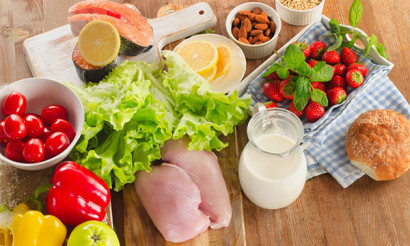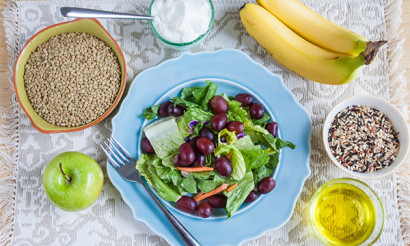Nutrition and diets for cystitis: what you can and can't eat?
Cystitis - a very capricious disease that progresses rapidly and progresses to complex forms. Most often this problem is faced by the fair sex, because the female body is vulnerable to diseases of the pelvic organs. Almost 40% of all girls have firsthand experience of this unpleasant diagnosis. Hardly a sharp pain during urination can be confused with anything else.
- What is cystitis
- Features of the diet
- What you can eat with cystitis
- What not to eat with cystitis
- What you can and can't drink with cystitis
- Diets for cystitis
- Menu for a day diet
- Approximate 7-day menu
- Recipes for cystitis
- Millet porridge with pumpkin
- Cheese casserole
- Oat soup
- Steamed turkey meatballs
- Vegetable Stew
- Zucchini dumplings with chicken and cheese
- Zucchini cutlets in the steamer
- Beet soup
- Rice pudding
- Lenten Pumpkin Pancakes
Disease-causing microbes can have a negative impact on both the kidneys and reproductive organs. Therefore, visiting a doctor, undergoing a complete examination and taking tests is mandatory. The doctor will prescribe antibacterial therapy, select a diet plan and tell about the peculiarities of the diet during the recovery period.
What is cystitis
This is an ailment, which is characterized by inflammation of the walls of the bladder. The disease occurs in a chronic or acute form. Doctors distinguish between primary and secondary inflammatory process. In the first case, it is an independent disease, and in the second, it is associated with bladder abnormalities. The disease is caused by pathogenic bacteria, as well as chemical and toxic substances and allergens. If cystitis is caused by microbes, it is classified as infectious.
Cystitis occurs due to several reasons:
- Hormonal disorders.
- Penetration of bacteria into the organ through the urethra.
- Injuries.
- Features of the anatomy.
- Against the background of venereal or gynecological diseases (e.g., chlamydia, ureoplasma).
- Overcooling.
- Complications during pregnancy.
- Ignoring the rules of personal hygiene.
- Lack of vitamins.
- Reduced immunity in the background of other diseases.
- Abuse of spicy food and alcoholic beverages.
You can recognize the disease by the following symptoms:
- Frequent urges to urination, which are accompanied by sharp pain, burning.
- A mixture of blood in the urine.
- Darkening of the color of the discharge.
- Constant feeling that the bladder is full.
- Pain in the lower abdomen and lower back.
- If the course is acute, an increase in body temperature.
If cystitis has progressed to the chronic stage, the only symptoms are frequent urges to urinate. Laid-off disease, it is possible to develop complications. For example, pathogenic bacteria will reach the kidneys, which causes pyelonephritis. Also cystitis can progress, then affected will be not only the mucous layer of the bladder, but also the muscular layer, which will lead to scarring.
Cystitis is diagnosed in several ways:
- general urinalysis;
- Ultrasound examination of the organ;
- Cystoscopy (in the chronic stage);
- Biopsy (optional);
- Nechiporenko urinalysis;
- urine culture.
Women will also be offered a gynecological examination on the chair, in order to rule out concomitant diseases.
To treat the disease, doctors prescribe antibiotics, antispasmodics (if there is pain when you go to the bathroom), decoctions and herbal infusions, which have a specific action, namely to remove excess fluid. Of course, an important step in the treatment of the disease is strict adherence to the diet. It is forbidden to add salt, pepper, a lot of sugar to food. To flush harmful bacteria out of the body, it is necessary to drink large amounts of unsweetened drinks or simply still water.
Nutritional peculiarities
One diet for treatment can not do alone, but in a complex dietary restrictions will help to quickly solve the problem and forget about it forever. The main rule is to drink as much as possible. Preferably pure water without sugar, lemon juice, also recommended lingonberry and cranberry morsels, decoctions of diuretic herbs, rose hips, birch buds, oat grains. Chamomile leaves have anti-inflammatory effect, they are not harmful and hypoallergenic, will help to speed up the recovery.
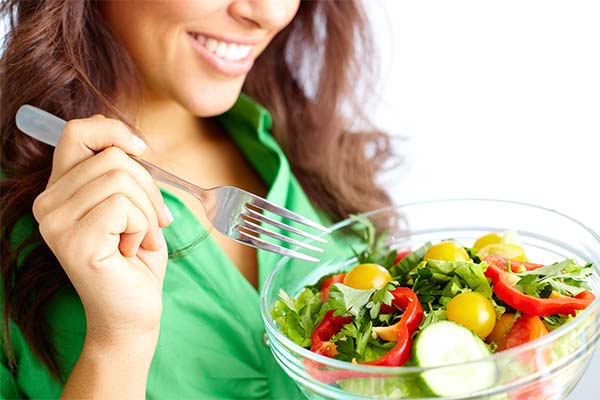
Increased consumption of fluids is due to the fact that pathogenic microbes are flushed out of the body faster, also the level of acidity of urine is reduced, which relieves the burning sensation during a visit to the toilet. It is worth remembering that a lot of fluid in fresh fruits and vegetables, as well as watermelon, melon, grapes, zucchini. Asparagus, tomatoes and some other vegetables are prohibited. Consumption of fermented dairy products is also preferable.
Doctors recommend including more fiber in your daily diet. It is found in pasta made of durum wheat, wholemeal bread, dried fruits, fresh vegetables (especially carrots), and cereals (herbs, brown rice, bulgur, and buckwheat). Fiber is necessary for normal intestinal function, because constipation only aggravates cystitis due to intoxication of the body. You can also arrange vegetarian days off, which will adjust the work of the gastrointestinal tract.
When treating inflammation of the mucous membrane of the bladder, you should strictly exclude from the menu all irritants. This is black tea (you can dilute it with milk), coffee in any form, alcohol, sweet soda, sour, salty, spicy, pickles, fried foods, spices, canned foods. Be sure to limit the use of legumes, greens, garlic, radishes, onions, radishes. These foods reduce the activity of antimicrobial drugs.
Salt itself is not dangerous for the human body, but it provokes fluid retention and edema. This is undesirable in the treatment of cystitis, as it will be an additional load on the kidneys, and the entire body in general.
Basic principles of the diet for cystitis:
- Prevention of constipation.
- Exclusion of fats and spicy foods, semi-finished products, fast food.
- Low consumption of salt, spices and sugar (including honey, fructose, sugar substitutes, if possible complete elimination from the diet).
- Diuretic effect of drinks and foods.
- Prohibition of heavy methods of food processing (frying, canning). Prefer steamed cooking, baking, boiling, and stewing.
- Small-protein diet.
- Soups - only in vegetable broths, soups - from cabbage nonsourishing variety.
- Pure water consumption (at least 2 liters a day).
Menus must be nutritious and full. The main goal is a sufficient number of vitamins and micronutrients, which will be needed during treatment. It is not necessary to reduce the caloric content of the diet. The main objective of a diet for cystitis is not weight loss, but a gentle diet that excludes irritants to the inflamed mucosa of the bladder.
It is obligatory to have fractional meals 4-5 times a day - at least 3 full meals and no more than 6 snacks during the day. It is desirable to eat in small portions, so as not to overload the gastrointestinal tract. Dinner is sure to be light, caloric foods are eaten in the first half of the day or at lunchtime. This is due to the fact that the function of the kidneys and bladder are activated in the morning. In the evening, these organs are relaxed.
Important! You should not try in the period of the disease exotic foods, use smoked foods.
With cystitis should be eaten mostly dairy and plant foods. Only in this diet of the right proportions of fats, proteins and carbohydrates. It is necessary to eat in this manner for at least one month during the entire treatment and two weeks after full recovery. If the cystitis is delayed, then the diet should be continued. When the disease has progressed to the chronic stage, you will have to stick to the diet for the rest of your life. If you do not give up such a diet, it eliminates the possibility of relapse, increasing the chance of getting rid of the disease quickly. Proper nutrition is the key to health.
What can be eaten with cystitis
Doctors have compiled a list of approved foods for cystitis, so that patients know what they can include in their daily diet. The list includes provisions that remove pathogenic bacteria from the body in a short time, activates the metabolism, has antimicrobial and diuretic, anti-inflammatory action. When cystitis turns into pyelonephritis, the patient is recommended to eat melon, pumpkin, zucchini, celery, cucumbers. Very useful for cystitis is watermelon, this sweet berry is not only pleasant to taste, but also quickly removes all the bad things from the bladder.

If young children are faced with cystitis, they should definitely be given cranberries. They can be eaten fresh or cooked into kissels, morsels. Lingonberry leaves are brewed as tea. This berry is forbidden only to those who have problems with the stomach.
In the chronic stage, the disease is also dangerous, because it is almost asymptomatic. You will have to stick to a diet for the rest of your life. It is important to establish a diet and turn it into a healthy habit, instead of associating it with permanent restrictions. The diet in this case will increase the body's resistance to the formation of kidney stones, improve the immune system, and reduce the risk that the inflammatory process will spread to other organs. In addition, a diet for cystitis will prevent an exacerbation of the disease.
Inflammation of the bladder mucosa is often treated with antibiotics, which cause problems with the intestines. After all, this organ has not only harmful but also beneficial bacteria (bifido and lactobacilli). Antimicrobials kill all microorganisms, so the intestine is out of balance with flora, diarrhea and constipation. In the case of diarrhea, a person rapidly loses water and vitamins, the metabolism slows down, and the recovery process takes a long time.
In the case of constipation there is also intoxication. It is possible to restore normal intestinal function with dietary supplements (probiotics) and proper nutrition. These are cereals, wholemeal bread, fresh vegetables, fermented dairy products, baked apples. It is better not to get carried away with dairy products. Allowed lean kefir, sour milk, sourdough, fermented milk, unsweetened yogurt, cottage cheese, unsalted hard cheese.
A complete list of foods that are also allowed in the acute and chronic stages:
- Boiled beets.
- Saups of sauerkraut.
- Fruit (except citrus fruits and exotic, preferably local apples and pears, grapes).
- Pomegranates.
- Vegetable broths only.
- Buckwheat and oatmeal porridge.
- Bran.
- Olive oil.
- Meat, poultry and fish only lean varieties (rabbit, veal, turkey, chicken, hake, no pork, beef in limited amounts).
- Berries (blueberries, cranberries, currants, lingonberries, cloudberries).
- White bread.
It is worth noting that you should not get carried away with flour products, under the strict ban rye bread. The consumption of eggs is also limited, not more than 2-3 per week. You can eat pine nuts about 30 g per day, they are useful and nutritious. Milk is eaten only after the acute stage of the disease has passed. It is important to buy only natural products, without additives. In the first days, it is better to give preference to light foods. The body fights cystitis and spends a lot of energy on this, it is not worth overloading the gastrointestinal tract with heavy foods. It is recommended to eat more fresh and stewed vegetables, diet soups, freshly squeezed diluted juices. They reduce the load on the stomach and intestines, remove toxins.
What not to eat with cystitis
Doctors do not advise to eat those products that irritate the mucous membrane of the inflamed organ. Even among fruits and vegetables, there are some that are irritants, they are excluded from the menu. Citrus fruits are strictly prohibited: grapefruit, oranges, tangerines, lemons, pomelo. Do not drink juices of these fruits, it is better to give up tea with lemon. Despite the fact that citrus fruits are good at eliminating water from the body, they have a negative reaction on the mucosa.
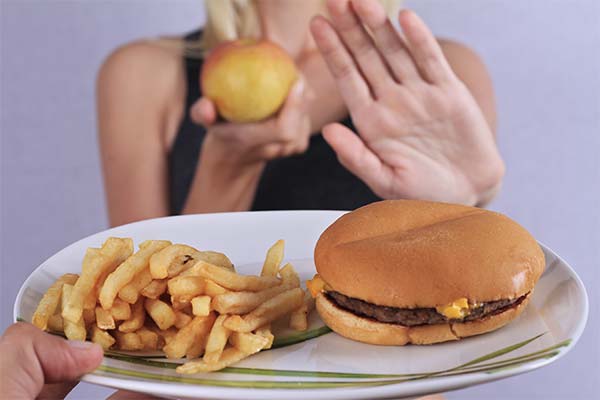
Plums, bananas, avocados, asparagus, sorrel, onions, radishes, radishes, garlic, horseradish, spinach, bell peppers, chili, tomatoes, peaches, cherries, nuts, mushrooms and legumes are also not allowed. They have essential oils and oxalic acid, which irritates the urinary tract. Apples are allowed, but baked and not sour.
Sweet eaters in the treatment of cystitis are in for some unpleasant news. The list of allowed products does not include sweets: cakes, chocolate, candy, ice cream, cakes. It is better to replace them with apricots (no prunes), quinces, oriental sweets: halva or Turkish delight. Honey is not recommended, but as an exception you can have a teaspoon a day. Sugar and confectionery products contribute to increased inflammation. It is better to abstain from salt, so as not to suffer from edema. Allowed no more than 8 grams a day.
Foods with a lot of preservatives, spices and spices are also under strict prohibition. These are sweet sodas, chips, potato chips, nuts, fast food, smoked foods, and semi-finished products. They interfere with the assimilation of useful micronutrients, remove fluid, and contribute to the development of intoxication of the human body. Disturb the metabolism of pickled, spicy and salty products. It is better to reduce fat consumption. No margarine, cooking fats, strong meat and fish broths, mayonnaise. Of dressings for salads, it is better to give preference only to fresh sour cream, unrefined oil, ketchup and vinegar are prohibited.
Under a strict ban alcoholic beverages, including beer. They categorically should not be mixed with antibiotics. Also, alcohol, even in small quantities, leads to intoxication of the body, which will ensure a deterioration of health.
What you can and what you can't drink with cystitis
It is important to note that compliance with the drinking regime is the key to a speedy recovery. It is necessary to drink no less than 2 liters for an adult. Normal room temperature drinking water will speed up the metabolism. You can also make compotes, morsels, kissel, infuse herbs, brewed weak green tea without sugar and lemon, can be with milk. A lot of vitamins in sea buckthorn tea, it will also give a boost of vivacity instead of the forbidden coffee. Black tea, alcohol, cocoa, and sugary sodas are not allowed. It is desirable to include in your diet more juicy fruits and vegetables, because they have a lot of liquid. Watermelon has a wonderful diuretic property.
Juice therapy is also effective. You can drink both fruit and vegetable freeshes and smoothies. The detox effect will come in handy, it will help get rid of toxins and slags, remove excess fluid, and replenish the charge of useful substances. The main thing is not to buy ready-made drinks in the store. They contain enough sugar and preservatives, which will irritate the bladder mucosa.
Useful decoction of oats, even more than porridge. Take it on an empty stomach. To prepare such a drink is not difficult, it is done in two ways:
- Boil oats in a large amount of water, drain the resulting liquid, cool it to a comfortable temperature.
- Boil the groats in a large volume of liquid, grind together with the oats with a blender. The drink will turn out thick, it perfectly quenches hunger and thirst.
There are many recipes for healing infusions for cystitis. They were treated by herbalists in Russia, when there were no mixtures and pills. Excellent help infusion of dill seeds or lilac flowers, and even boiled in milk almonds. Drinks that were drunk to treat cystitis:
- Berry mix. Mix in equal parts black currant, strawberry and birch buds. Take a tablespoon of the resulting mixture, pour a glass of boiling water. Infusion pour into a thermos or just cover the container with broth. Strain the drink after at least an hour. Drink half a glass before a meal.
- Sea buckthorn tea. Make a tablespoon of yellow berries, you can add strawberry leaves for a better effect. Pour boiling water, leave to infuse. Drink three times a day before a meal.
- Decoction of corn stigmas. Often doctors themselves prescribe such a decoction in complex therapy. Corn stigmas have a diuretic effect, remove toxins and bile, normalize metabolism, reduce blood sugar levels. It is necessary to make a decoction, not an infusion. The drink is prepared on a water bath for about 20 minutes. It is not necessary to make a fresh decoction every time, it can be stored in the refrigerator for a long time. Take it a quarter of an hour before a meal, 2 tablespoons.
- Useful kissel of unrefined oat grains. One and a half cups of grains pour a liter of water and leave overnight. When the contents swell, put the grains in a blender or grinder, and then again dilute with two liters of water. The mass should ferment for 2-3 days, after which the kissel should be boiled over low heat for about five minutes. To drink the drink is not crumpled, you need to stir it constantly when boiling. Kissel strain, it tastes thick and sour. Such a drink can replace an independent meal due to the fact that it is nutritious, it has enough carbohydrates, protein and fiber. Remaining cake after decanting can be re-pour water, boil and strain.
- Cranberry morsel. This pleasant drink saves in the summer heat and is well refreshing and toning. Both fresh and frozen berries will do. But the most useful version is made from lingonberry leaves. You need 2 tablespoons of dried leaves, pour two glasses of boiling water, let stand 30-40 minutes, then drain. Picking one cup of berries, rinse and dry well, grind. You can add a little sugar or honey. Pour the infusion into a pot, add pounded berries, cook over low heat until boiling. Then strain the drink through a sieve and allow to cool. Consume throughout the day. Can be stored in the refrigerator for several days.
Often make compotes from non-sour apples, apricots, raisins. It is necessary to avoid prunes, they are not recommended for cystitis.
Diets for cystitis
Women in particular need to follow dietary principles strictly. Scientists state that there is a close connection between the vaginal microflora and cystitis. Antibiotics have a negative effect not only on pathogenic bacteria, but also on beneficial ones. Proper nutrition, in turn, helps the body to recover sooner and get the gastrointestinal and genitourinary systems working properly, finally eliminate the feeling of pain when urinating. Some doctors prescribe their patients the Pevzner diet, which is popular in our country. Dietary restrictions are similar for cystitis, such a therapeutic table contains products that perfectly eliminate inflammation.
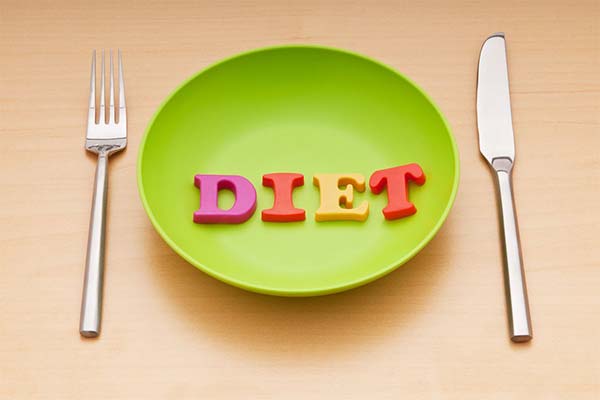
The Soviet scientist, who came up with such a dietary system, believed that the therapeutic diet performs several tasks:
- Maintains the patient's strength.
- Influences the development of the disease.
- Is a neurohumoral and constitutional therapy.
- Reduces the tendency to relapse.
- Is a therapeutic agent.
- Improves the effectiveness of medicines.
- It is a preventive measure against the transition from acute to chronic stage of the disease.
- Consolidates the positive result.
Manuel Pevzner urged us to count the components of the food we eat and see how much protein, fat, carbohydrates, and mineral salts they contain.
Depending on the results of treatment, the diet could be adjusted. If the urine is acidic, experts recommend diet number 6, where it is forbidden to eat pasta, sausages, baked goods, confectionery and flour products. You can only eat lean meat and fish in limited quantities, dairy products, fruits, berries, and vegetables. Meals should be fractional, in small portions in six meals.
If urine alkalinization has occurred, Table 14 is recommended, where soups, potatoes, sour cream, and milk are forbidden. The main emphasis is on carbohydrates, and it is equally necessary to eat proteins and fats. You should eat 4 times a day, the total caloric content is about 3000 kcal. If oxalates are found in the urine, it is mandatory to take additional magnesium. Cereals and whole grain bread are rich in this element.
If the disease progresses, pyelonephritis or nephritis has begun, doctors will prescribe the therapeutic table No. 7. Such a diet is called a kidney diet. The total caloric intake is about 3500 kcal, eating usually 5 times a day. The amount of fluid is reduced to 1 liter, and from the salt refuse at all, a maximum of 2-3 grams of salt per day. Under a strict ban smoked meats, sausages, fatty meats and fish, legumes, canned foods.
Recommendations for the Pevzner diet are followed in hospitals, but even after discharge from home to continue to eat according to the doctor appointed therapeutic table. So you can consolidate the results of therapy and quickly restore the body after a serious illness.
Menu of the diet for the day
Despite the fact that there is a complete list of products allowed with inflammation of the bladder mucosa, many women do not always understand which dishes can be cooked and which not. We offer a variant of a sample menu for a few days. Such a diet turns out to be as balanced as possible.
- For breakfast, you can eat milk porridges of buckwheat or herkules, steamed omelets, cottage cheese, sandwiches of wholemeal bread and solid unsalted cheese, natural yogurt with fresh berries or fruit. Of drinks are green or herbal tea, fruit or vegetable fresh fruit or vegetable smoothies, nonfat kefir.
- For lunch, it is best to eat soups with vegetable broth. These are cabbage soups, beet soups, borsch of sauerkraut, soups with cereals, as well as in the form of mashed potatoes. The second course is made up of steamed or baked cutlets and meatballs made from dietary kinds of meat or fish. Chicken or beef can be stewed, or vegetable stew, or boiled cereals or pasta. Do not forget about drinks: morsels, kissel, compote and berry mousse.
- For afternoon snacks it is recommended to drink kefir or ryazhenka with bread, baked apples and pears, oatmeal cookies, berry jelly, fruit and whey soufflé.
- Dinner is three hours before bedtime. The last meal should be light: boiled chicken or turkey, vegetable salad with low-fat sour cream, cottage cheese casserole, porridge, beaten eggs, buckwheat pancakes.
Approximate menu for 7 days
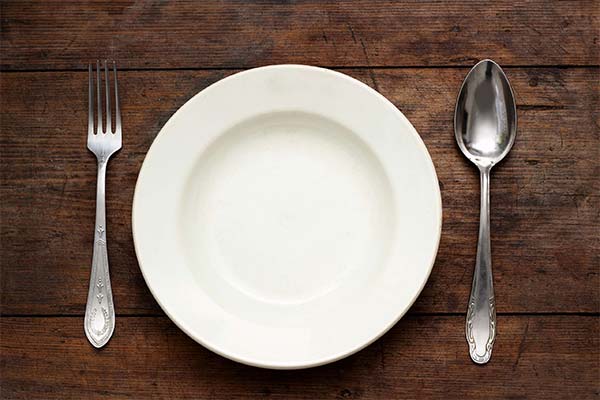
First day:
- Breakfast. 200g of boiled buckwheat, 100g of cottage cheese with dried fruit, a glass of juice.
- Snack. Berry kissel, bread.
- Lunch. vegetable cream soup, 150g of boiled meat, mashed potatoes, rosehip infusion.
- Afternoon snack. sour milk or ryazhenka.
- Dinner. Fruit salad with natural yogurt dressing, nonfat kefir.
The second day:
- Breakfast. Milk porridge from oatmeal with fresh berries, baked apple, glass of weak green tea.
- Snack. Fruit or vegetable smoothie.
- Lunch. Okozka on kefir without meat and sausage, baked potatoes, berry kissel.
- Afternoon snack. Ryazhenka.
- Dinner. Steamed omelet from one egg with greens, bread from rye flour, freshly squeezed carrot juice.
Third day:
- Breakfast. Muesli with kefir or juice, herbal tea.
- Snack. Fruit, sea buckthorn tea.
- Lunch. oatmeal soup with croutons, boiled beef or veal, fresh vegetables, compote of dried fruits.
- Afternoon snack. Bread, berry kissel.
- Dinner. Boiled fillet of pollock, cod and baked potatoes, nonfat kefir.
The fourth day:
- Breakfast. Smoothie of berries and kefir, baked apple, sea buckthorn tea with strawberry leaves.
- Snack. Cottage cheese with berries or dried fruits, herbal tea.
- Lunch. Beet soup, boiled fish, rice as a side dish, pear juice.
- Afternoon snack. Fruit salad, compote from dried fruit.
- Dinner. Steamed cutlets with stewed vegetables, salad with fresh cucumbers, kefir.
The fifth day:
- Breakfast. Millet porridge with butter, white bread toast with cheese, green tea.
- Snack. Kefir, berries.
- Lunch. Lenten buckwheat soup, rice casserole, lingonberry juice.
- Afternoon snack. Ryazhenka, oatmeal cookies.
- Dinner. Turkey, chicken or rabbit meatballs, durum wheat pasta, boiled beets, berry kissel.
Day 6:
- Breakfast. Cottage cheese casserole with fruit, herbal infusion.
- Snack. Berry mousse, a glass of pomegranate juice.
- Lunch. Sea perch or cod soup, rice with vegetables, bread, carrot juice.
- Afternoon snack. Apple compote.
- Dinner. Milk soup with pasta.
Seventh day:
- Breakfast. Milk oatmeal, herbal tea with a spoon of honey.
- Snack. Cottage cheese pudding with apricots, cranberry kissel.
- Lunch. Cabbage soup with sauerkraut, pumpkin stew, bread, herbal tea.
- Afternoon snack. Fruit, berry morsel.
- Dinner. Fish with fresh vegetables, toast with whole-grain bread and cheese, ryazhenka.
As you can see from the weekly menu, even with restrictions on food it is easy to eat healthy, tasty and varied. Such a diet will fully satisfy the body's need for vitamins, minerals and give the necessary energy.
Recipes for meals with cystitis
Dietary dishes need to be prepared in a special way. For example, soups are made without overcooking, cutlets are fried in a pan with a nonstick coating without oil, and even better in the oven or steamer. Here is a selection of delicious dietary dishes that can be eaten in the treatment of cystitis.
Millet porridge with pumpkin
It takes a glass of millet, 3 cups of low-fat milk, half a kilo of pumpkin, a teaspoon of sugar (to taste). Cooking time is about half an hour.

- Peel the pumpkin and cut into small cubes.
- Put the vegetable in boiling milk, cook for a quarter of an hour.
- Rinse and pour grits into the boiling mass, add sugar.
- Cook until thickened, about 15 minutes.
You can eat the porridge immediately or put it in the oven for half an hour, so it becomes tastier and sweeter.
Custard cottage cheese casserole
Mix a packet of low-fat cottage cheese with 1 chicken egg until smooth, add raisins or dried cranberries, transfer to an silicone or glass mold and send to the microwave for 4 minutes. The finished casserole is poured with natural yogurt. This dish is prepared quickly, but it is no less delicious if compared to the classic recipe. Also it has no extra carbohydrates and sugars, which is useful in the treatment of the disease.
Oat soup
This option is great for lunch, it can be both adults and children. Despite the small number of calories, the soup satiates well, and oatmeal has a positive effect on the recovery of the gastrointestinal tract and bladder mucosa.
The ingredients will require:
- potatoes (4 medium sized pieces);
- carrots;
- 100 grams of oat flakes;
- greens.
Wash and peel the vegetables. Dice potatoes into small cubes, and grate carrots. Put the vegetables in a pot, pour water and put on medium heat. You can put a whole peeled onion while cooking the broth, and at the end of cooking remove it. This way the soup will be more fragrant.
When the potatoes boil, usually 15 minutes after boiling, you need to add long-cooked oat flakes, a pinch of salt to taste, reduce the heat, simmer for another 5 minutes. After turning off the heat, the dish should wait a little longer under a closed lid, so it becomes thick. Before serving, finely chop the herbs and sprinkle the soup with them. This variant of dinner is self-sufficient, but you can pre-cook the chicken fillet, cut it into cubes and add it to the already ready broth.
Steamed turkey meatballs
Steamer - a great household appliance, with the help of which you can prepare a lot of dietary tasty dishes.
To prepare the meatballs you need turkey sirloin (500 g), rice, carrots, herbs, eggs.
Pass the turkey meat through a meat grinder, add the egg, grated carrot and finely chopped greens. Soak rice in hot water, let it stand. Drain the liquid, add groats to the mince. Mix everything well, form round cutlets, place in a steamer, cook for 20 minutes. Serve with side dish of grits or pasta, vegetable salad and sour cream.
Vegetable stew
There are many variants of cooking vegetable stew, because it is quite a popular dish even among those who do not adhere to a diet. This variant is prepared without oil. You can stew the vegetables in a pot with a thick bottom or in a multicooker on the "Stew"/"Smothering" mode.
You will need the following vegetables:
- potatoes (3 pieces);
- zucchini;
- broccoli;
- carrot.
All peel, dice potatoes and zucchini, carrots in rings, cut broccoli into florets. Put everything into a pot, stir, add a pinch of salt, cook until tender. It is not necessary to pour water, during the stewing the liquid will be released from the vegetables. It can be drained later or left to taste.
Zucchini dumplings with chicken and cheese
This option is perfect for a light but hearty dinner. Zucchini divide into two halves, no need to peel. Cut out the core, cut into small cubes. Dice chicken fillet, mix it with fresh greens and sour cream. Send in the oven for a quarter of an hour, sprinkle with grated cheese and bake for another 5-10 minutes.
Zucchini cutlets in a steamer
In addition to zucchini, you need to prepare the white of one egg, rice flour. Peel the vegetable, grate it on a coarse grater. Add the egg white and a pinch of salt. Make cakes out of the mass, roll in flour. Coat the bottom of a steamer with olive oil, put the cakes out and cook for about 15-20 minutes. Serve with sour cream and side dish of buckwheat or rice.
Beet soup
The easiest dish that is prepared quickly, and you do not have to spend a lot of money on ingredients. The soup is very hearty, you can additionally dress it with sour cream, kefir or ayran.
For the beet soup you need:
- beets and tots;
- cucumber;
- egg;
- herbs.
Peel the beets, grate them, and boil them until tender for about 5 minutes. If you do not like grated beets in the soup, you can cut them into small cubes, but in that case you will have to cook the vegetable longer. Boil the broth without sugar and vinegar.
Rinse and shred the leaves, add them to the boiling water with beets. When the liquid boils again, turn off the heat and allow to stand. Boil the egg, peel cucumbers, cut into small slices. Mix everything, when serving put a little sour cream and finely chopped fresh herbs. The soup turns out delicious and fragrant.
Rice pudding
Sometimes you want to pamper yourself even on a diet. Candy, cookies and chocolate are not allowed, but it is easy to prepare a delicate rice pudding with berries or fruit. Such a recipe many people know from childhood.
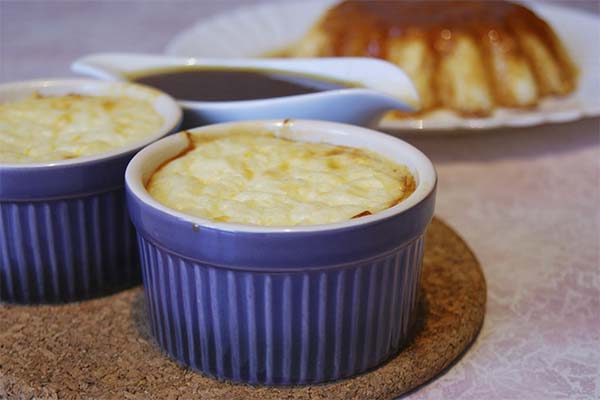
Ingredients:
- 2 cups of rice;
- 1 liter of milk;
- 2 eggs;
- 2 apples;
- some fresh berries;
- vanillin;
- 30 g of butter.
Boil the rice in milk, cool. Mix eggs with vanilla, beat with a fork. Melt the butter, add to the egg mixture, mix until smooth. Prepare the bowl of a multicooker: grease with butter, sprinkle with semolina or breadcrumbs. Mix the rice porridge with the egg mixture, fruits, berries, mix everything well. Cook for 40-45 minutes in "Baking" mode. After the multicooker will signal the end of cooking, do not hurry to take out the pudding. He needs to give time to infuse and "rest". When it cools, turn the bowl of the multicooker - the dessert itself will easily detach from the walls of the dish. Cut the casserole into squares, serve with low-fat sour cream or natural yogurt.
Lenten pumpkin pancakes
Peel the pumpkin, separate about 200 g, remove the seeds and inner fibers. Grate the vegetable on a fine grater, mix with a glass of thick natural yogurt without additives. Add one cup of rice flour and vanilla, half a teaspoon of baking powder. Stir the dough and let it stand for 5 minutes.
Cook better in a non-stick pan, so you can prepare the dish without a drop of oil. Heat the bottom of the dish, spoon out the batter, forming a small circle. The pancakes should rise and bake well.
All dishes according to these recipes can be eaten at the chronic stage of the disease or in the period of relieving the symptoms of acute cystitis. It is very important that the diet is well balanced, so the body will have the strength to make a full recovery.
In addition to sticking to a diet, a person with cystitis should avoid hypothermia, carefully monitor hygiene, and prevent constipation. For this purpose, on an empty stomach, you can eat pine nuts or drink a tablespoon of olive or linseed oil. Also in the menu must be fiber, there is a lot of it in bread, bran, fresh fruits and vegetables, cereals.
It is necessary to leave the therapeutic diet gradually, you can not immediately jump on fast food, smoked foods, sweet or salty foods. It is easy to provoke a relapse and then the treatment course will have to be repeated, and it will be harder to get rid of the disease. The body is weakened and the antibiotics are addictive, an imbalance in the work of the intestines has occurred. It is necessary to realize the value of dietary nutrition, which should be adhered to for as long as possible. Some patients are strongly advised by doctors to eat this way for about a year. At the heart of the therapeutic table for getting rid of cystitis are the principles of proper nutrition, which help to fully improve the body, bring the body back to normal, replenish the reserves of vitamins and minerals.
«Important: All information on this site is provided solely for introductory purposes only. Before applying any recommendations, consult a health care professional. specialist. Neither the editors nor the authors shall be liable for any possible harm caused by materials."

